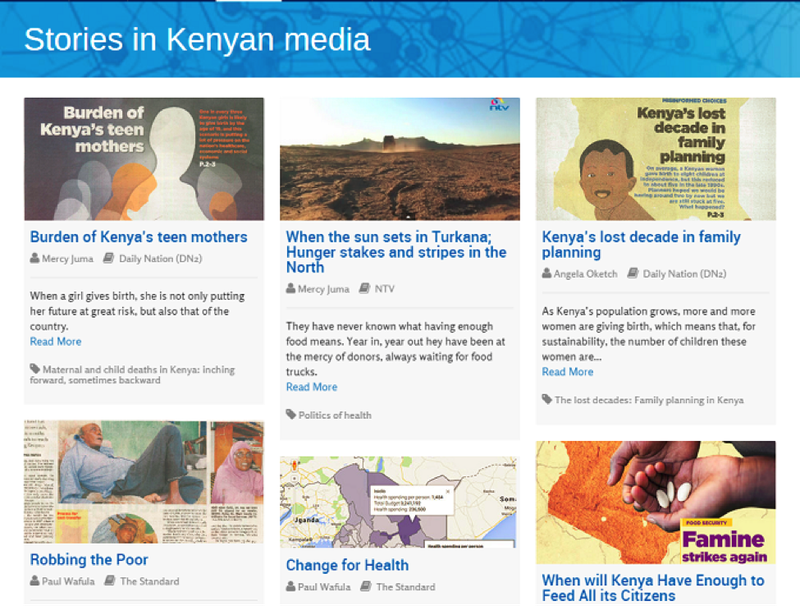OpenGov Voices: Why data journalism tries, and fails, to go global

In a recent data journalism workshop in Yerevan, Armenia, a young journalist discovered that after years of leading the European Union in the rate of incarceration, with a steady uptick over five years, the rate had suddenly stalled. Not only that, it had dropped. Had a bunch of prisoners been freed? Was there a drastic decrease in criminality in Armenia? Had the criminal justice system in Armenia changed policy or practice in a significant way?
Instead of being excited about this possible scoop, the journalist said that everyone knows that the government is corrupt and cyclically arrests and pardons enemies and allies. Sure, she could learn to graph the trend, but, why bother? The workshop, organized by Internews, a U.S. nonprofit dedicated to improving the quality of news information across the world, has been thinking a lot about this issue. This is a question not only for the global data journalism community but also for the open data community in general.
Data journalists have a potentially tremendous role to play in acting out its role as a public-service watchdog by transforming the flood of publicly available data into insight that facilitates citizen engagement in the democratic process. Across the world, in the most unlikely countries, Twitter is exploding with anecdotes of successful data journalism conferences, boot camps, hackathons and fellowships propelling propaganda-ridden, ambulance-chasing yellow journalism into the world of news apps, investigations and citizen engagement.
But even in the United States, that’s not an accurate description of the journalism revolution. Despite the potential of digital and data tools, most newsrooms simply aren’t there yet. According to “The Goat Must Be Fed“ authors, “Our biggest finding is that data journalism is out of whack with the hype – and we need to acknowledge that we’ve been part of the problem.”
Why digital tools are missing
In donors’ excitement to embrace the open government and open data movement, they have pumped lots of money into the quickest, cheapest and flashiest path to data journalism: boot camps, hackathons and conferences. Yet these approaches boil down the barrier to data journalism into one simple problem: technology. These boot camps are designed to provide technology solutions, with the tacit assumption that the rest will follow, but they have misdiagnosed the essential root problem. It’s not the tools, at least not primarily.
The first challenge is rooted in the assumption of the role of the media itself as a public-service watchdog. Flipping through a few Kenyan newspapers, the number of headlines with direct quotes is overwhelming. The role of media in many places is not to report the truth, but rather, to quote powerful people espousing their version of the truth. Once the quotation marks are removed and replaced by data, the journalist assumes some responsibility for content verification and in a place where governments and their data are distrusted, this is not something many journalists want to stake their reputation on. Actually getting to the bottom of things and identifying a chain of responsibility can be much riskier than exposing corruption in general terms.

A critical barrier to data journalism in countries where it has the greatest potential for good (the most corrupt, unequal and impoverished) is simple data literacy both among the media and among citizens. Data literacy for midcareer journalists in developing countries, which is both math and tech intensive, can seem irrelevant, intimidating and unrewarding.
Thirdly, the absence of a media industry crisis, no matter how imminent, offers a paradoxical barrier to innovation. Publishers see no need to engage in a difficult, expensive, risky endeavor when their traditional business model is stable. People are still buying newspapers, listening to radio and tuning into the nightly news. Those plug-and-play tools that seem like an easy way to get newsrooms started in data are often not supported by the CMS. Web traffic is so low that editors don’t want to bother adapting.
The data journalism boot camp buzz
Data journalism boot camps and hackathons, which began as a place to generate buzz around the open data movement, have now become a cheap substitute for actual sustainable investment in data journalism capacity. Despite a flurry of Twitter traffic, guest appearances by famous Western stars of data journalism and flashy prototypes produced by invited developers, the glowing appeal of the boot camp model is starting to fade.
The popular boot camp model is crippled by a few fatal design flaws:
- huge, 50-plus person events without a pedagogical strategy for teaching the necessary theoretical and technological skills for basic data literacy;
- failure to recruit promising journalists with the analytical skills who are most likely to thrive in data journalism but would not prioritize attending a massive boot camp;
- wasted resources to bring in high-profile speakers with little understanding of the local data or media environment;
- focus on developing prototypes for news apps and recycling cutting edge product ideas from previous boot camps that are far removed from the goal of enriching the quality of traditional media reporting; and
- lack of buy-in from editors and publishers to publish stories produced by budding data journalist and at worst, an after care system where a Western data journalist provides remote support to trainees and effectively produced a data story for him or her.
Rescuing the bootcamp
Many media development organizations are experimenting with composition, intensity and post-event support needed to ensure data journalism workshops have the desired impact: getting data-driven stories out through mass media. There is a huge potential for intensive training to overcome key barriers to data journalism, namely:
- sustained training in data literacy basics that lays the groundwork for more balanced, purposeful and objective reporting in countries with a weak history of independent journalism;
- identifying and supporting journalists who want to pursue public service journalism and linking them with other members of the open data community who can work together to lower the barrier to data journalism production; and
- actively persuading publishers and editors that data journalism can be a valuable asset in the face of digital convergence.
Another model developed by for pilot testing is the Data News Lab, where participants spend six weeks working intensively in a data-driven daily newsroom environment run by a team of trainers, combining capacity building and production for home outlets. More research into the goals of capacity-building activities and the impact of different training strategies to help shift a model based on open data hype to one of journalistic content.
Making the jump from tools to change
In countries desensitized to corruption, efforts to grow data journalism need to get serious. Transforming the legacy media’s messengers of breaking news into change agents for government accountability is a major challenge. It requires not just explaining the problem, but also exploring solutions. With this in mind, overcoming apathy will require not just a couple of data driven stories, but a structured journalism approach to covering governance consistently over time.
Interested in writing a guest blog for Sunlight? Email us at guestblog@sunlightfoundation.com

